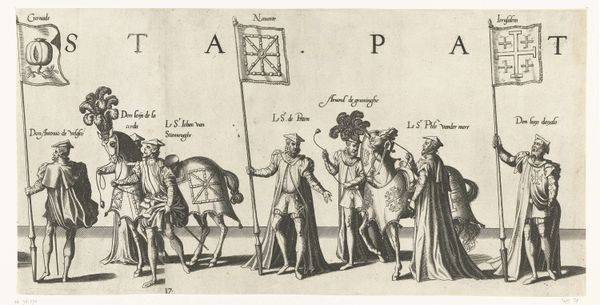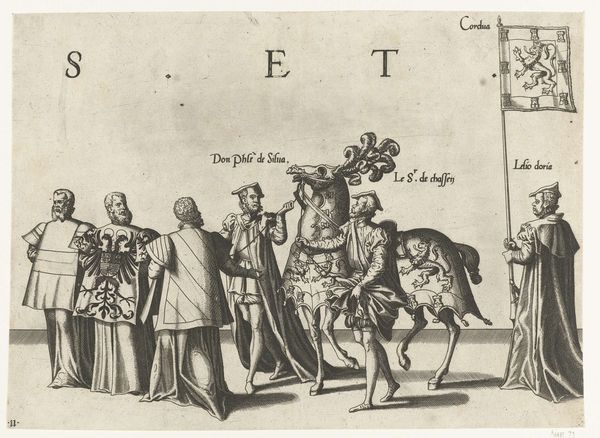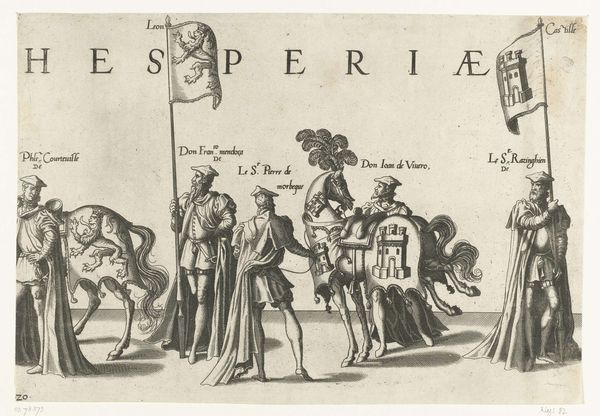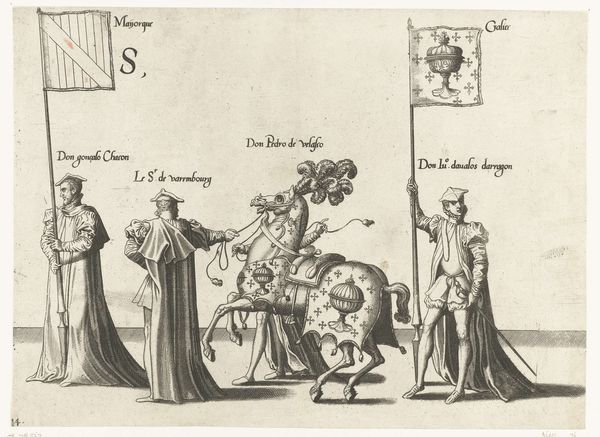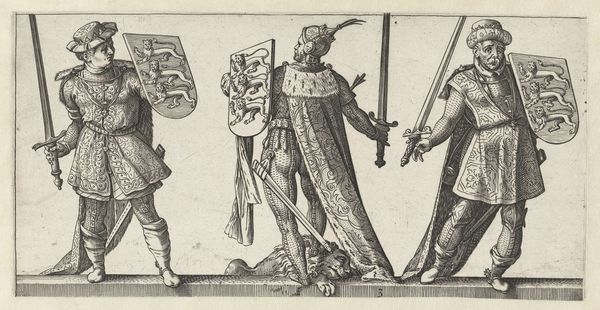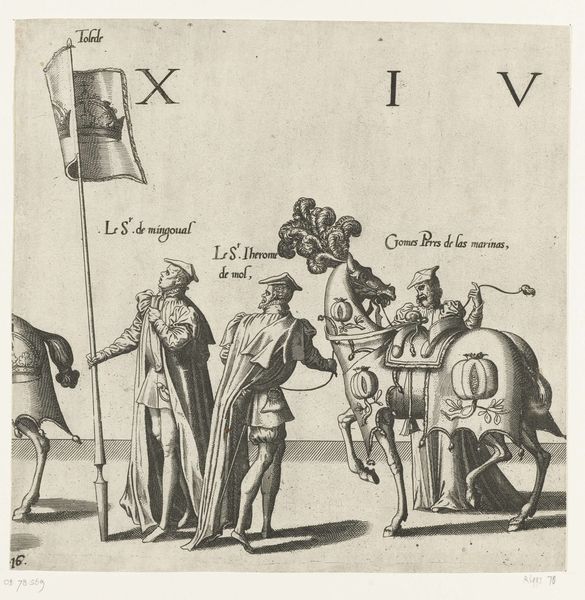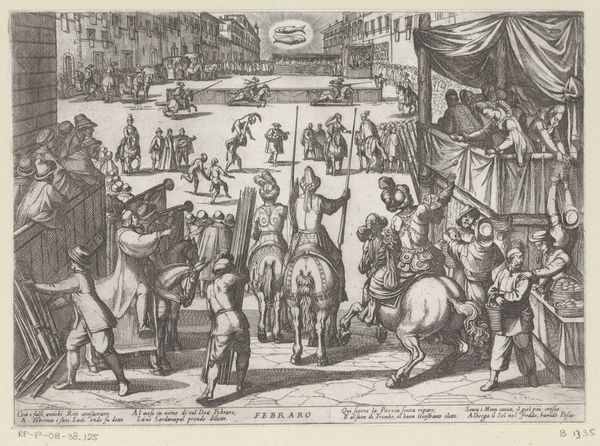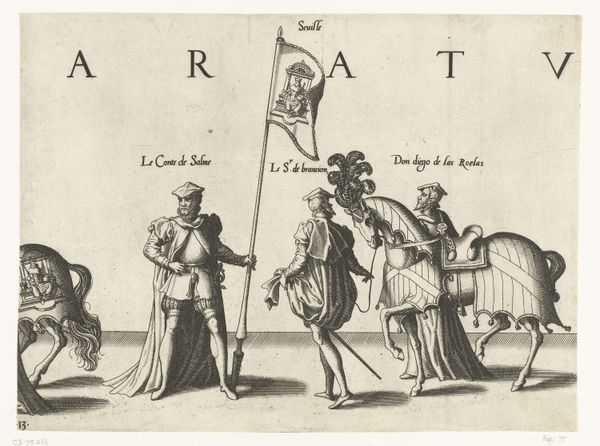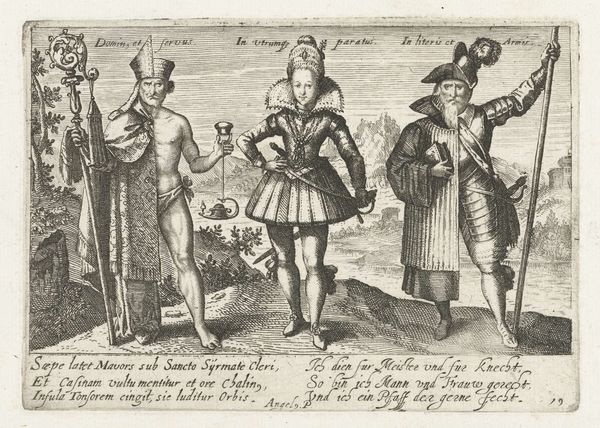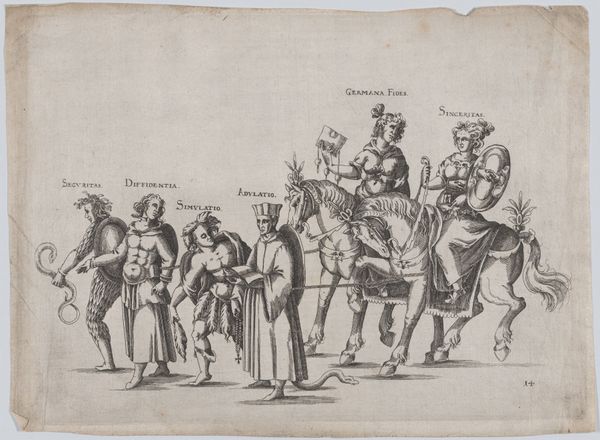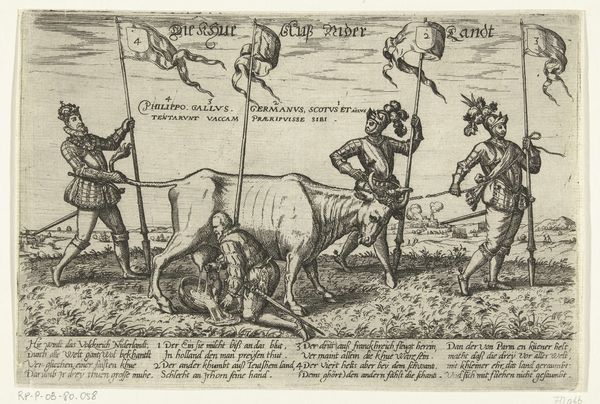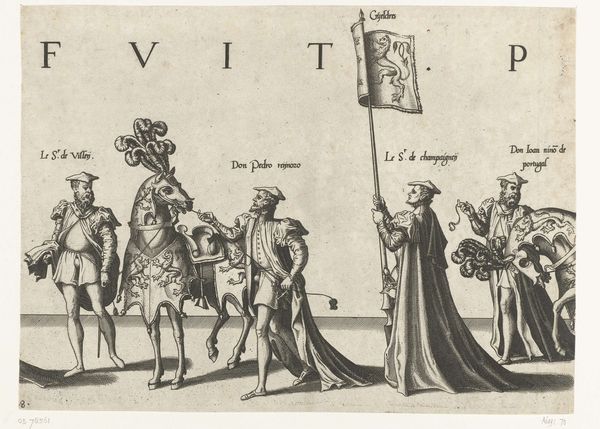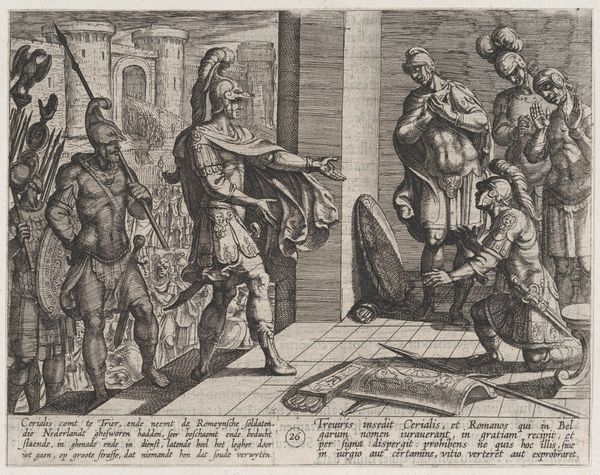
print, engraving
# print
#
figuration
#
11_renaissance
#
line
#
history-painting
#
northern-renaissance
#
engraving
Dimensions: height 235 mm, width 337 mm
Copyright: Rijks Museum: Open Domain
Curator: We’re now looking at “Deel van de optocht, nr. 10,” a print created in 1559 by Joannes van Doetechum, currently held in the Rijksmuseum collection. Editor: The stark, linear quality of the engraving gives it an air of deliberate formality, yet there’s also something curiously static about it; it captures movement, or rather, the *idea* of movement, without actually conveying it. Curator: Indeed, the rigidity aligns with the Northern Renaissance style, yet the line work achieves a remarkable level of detail, focusing particularly on texture and the human figure. Editor: This engraving represents part of a historical parade, but beyond the aesthetic considerations, it begs the question: what power dynamics are at play here? These figures, bearing flags and armor, stand as representatives of specific political entities like Burgundy and Austria. Who were these figures really, and how did this “pageantry” reflect or reinforce existing societal structures? Curator: If we move past identifying the figures represented here and the symbolic weight they hold and observe how meticulously the engraving has rendered each figure with detailed fabrics, observe also how the direction and fineness of the lines help establish depth. Editor: However, dismissing the historical context in favor of pure formalism sidesteps critical inquiries about the very purpose and historical importance of such displays. These parades weren’t merely aesthetic expressions. These meticulously staged public spectacles played a critical role in displaying power, legitimizing certain sociopolitical regimes, and reifying identities through performative display. Look closely: even the specific individuals named signal the hierarchical power. Curator: Nevertheless, analyzing the visual execution is key. Consider how Doetechum uses the graphic quality of the lines to capture light and shadow, shaping form within the composition. It directs your gaze deliberately. Editor: I can concede the elegance and intent of line, form, and style here but believe that we, as modern viewers, would do better interrogating these moments critically rather than simply enjoying them. Curator: Ultimately, approaching art this way allows one to consider its multifaceted essence. Editor: Indeed. Whether dissecting structural compositions or questioning inherent authority, our analysis expands how we understand the complex art, or propaganda, before us.
Comments
No comments
Be the first to comment and join the conversation on the ultimate creative platform.
